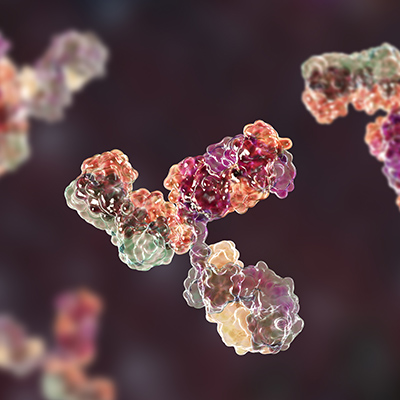March 20, 2023 -- Heat-sensing neurons are key contributors to severe allergic shock reactions, according to a study in mice that points to ways to reverse life-threatening symptoms.
Severe allergic reactions, known medically as anaphylaxis, happen when blood-borne allergens activate mast cells and trigger dilation and leakage of blood vessels, causing sharp drops in blood pressure and body temperature. In that established understanding of anaphylaxis, the severe response is driven by vasodilatation and vascular leakage. The process typically involves the induction of immunoglobulin E (IgE) antibodies and activation of mast cells.
Writing in Science Immunology, researchers at Duke University Medical Center have identified another driver: the nervous system. Soman Abraham, PhD, professor in the pathology, immunology, and molecular genetics and microbiology departments at Duke, explained what the team found.
"The sensory nerves involved in thermal regulation -- especially the nerves that sense high environmental temperatures -- send the brain a false signal during anaphylaxis that the body is exposed to high temperatures even though it is not the case. This causes a rapid drop in body temperature as well as blood pressure," Abraham said in a statement.
Abraham and his collaborators used mouse models to generate insights into the drivers of anaphylaxis. They showed that chymase, an enzyme from mast cells, activated TRPV1-positive neurons that are sensitive to heat. The activation triggered a neural circuit and, in doing so, caused the heat generated by certain fat tissues to fall rapidly.
To validate the findings, the researchers studied mice that were deficient in either chymase or TRPV1. In the absence of the enzyme or the sensory neurons it activates, the mice exhibited limited IgE-mediated anaphylaxis. Equally, in wild-type mice, systematic activation of TRPV1-positive sensory neurons induced anaphylactic reactions such as hypothermia and hypotension.
The implication of the nervous system in anaphylaxis, albeit only in mice for now, opens possible ways to treat a condition that is estimated to have affected up to 5% of U.S. citizens. An estimated 1% of people hospitalized with anaphylaxis die. Chunjing Bao, a PhD candidate in Abraham's lab at Duke, outlined the next steps for the research project.
"By demonstrating that the nervous system is a key player -- not just the immune cells -- we now have potential targets for prevention or therapy. This finding could also be important for other conditions, including septic shock, and we are undertaking those studies," Bao said.
Copyright © 2023 scienceboard.net










